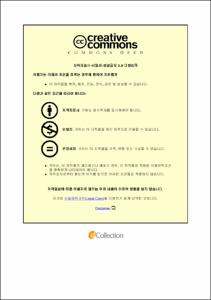Ulsan Univ. Repository
Thesis
General Graduate School
Mechanical & Automotive Engineering
1. Theses (Master)
Study on the Design, Implementation and Calibration of 3D Laser Scanner
- Abstract
- This research develops a 3D scanning system with a line laser projector, a camera, and a turntable for movable objects reconstruction. A detail process will be given to give an overview of how to build a 3D laser-based scanning system, from designing to calibration, and 3D reconstruction. To obtain the 3D information of the scanning object, all the elements have to be calibrated. Our system has three elements including camera, line laser, and the motor or turntable. Therefore, we propose two calibrations process. Because the camera is the only receiver device which can ‘see’ the other devices, we choose camera as the ‘standard device’ which the other devices information will transform to camera coordinate system. Therefore, we propose three calibration steps as: camera itself calibration, camera-laser calibration, and camera-motor calibration. With the prevalence of information nowadays, the camera calibration, and camera-laser calibration are well-know, therefore, our thesis will focus on camera-motor calibration which is also our contribution.
In our novel calibration method for 1-axis rotating mechanism, we will focus on 2 parameters, which are virtual rotation axis, and point on rotation axis. The rotation axis represents for the rotation transformation of motion, and the point on rotation axis represents for translation relationship. The calibration requires calibration board. At every angle of the motion, the camera acquires the calibration pattern image to determine the origin coordinate of the camera coordinate system. The trajectory of them is then estimated as a spatial circular to find its center point, known as point on rotation axis. The normal vector of the plane created by the camera origins is used as the virtual rotation axis. The whole real scanning system was tested by applying a comprehensive checking method to the scanning results. From the planarity testing experiment, it was shown that the average of the planarity is 0.3379mm. The accuracy test was performed with the calibration block showing that its maximum error is 0.0637 mm, and its average in 15 testing time is 0.0153 mm. The scanning quality is also checked by scanning different shape objects.
- Issued Date
- 2022
- Awarded Date
- 2022-08
- Type
- dissertation
- Affiliation
- 울산대학교
- Department
- 일반대학원 기계자동차공학과
- Advisor
- 이병룡
- Degree
- Master
- Publisher
- 울산대학교 일반대학원 기계자동차공학과
- Language
- eng
- Rights
- 울산대학교 논문은 저작권에 의해 보호 받습니다.
- Appears in Collections:
- Mechanical & Automotive Engineering > 1. Theses (Master)
- 파일 목록
-
-
Download
 200000635458.pdf
기타 데이터 / 2.51 MB / Adobe PDF
200000635458.pdf
기타 데이터 / 2.51 MB / Adobe PDF
-
Items in Repository are protected by copyright, with all rights reserved, unless otherwise indicated.